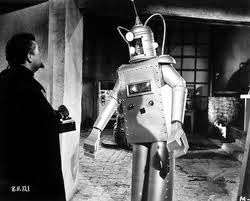I shouldn't have focused so exclusively on the dopiness of the David Goyer remarks w/o commenting equally on those of host Craig Mazin, who started the ball rolling thusly:
The real name for She-Hulk was Slut-Hulk. That was the whole point. Let’s just make this green chick with enormous boobs. And she’s Hulk strong but not Hulk massive, right? … She’s real lean, stringy…
The whole point of She-Hulk was just to appeal sexistly to ten-year-old boys. Worked on me.
Later he wrote the following here:
First off, my point wasn’t that I think She-Hulk is a slut. I don’t. I don’t think anyone is a slut. I don’t think there’s anything shameful about female sexuality or the female body.
What I don’t like is the practice of pushing exaggerated images of female bodies to boys because it sells comic books or video games. Women in comics and video games aren’t accidentally drawn over and over and over again with outsized breasts, long legs and narrow waists. It’s marketing. Having a character remark recursively on that marketing doesn’t negate the marketing, of course. It’s a clever way to defuse criticism with grownups while selling issues to hormone-addled boys.
I need not repeat my basic defense of She-Hulk from HIGHLIGHTING ANXIETY PT. 2, but I will point out that Mazin wants to have things both ways. He basically says, "Yeah, when I was a hormone-addled boy, I got pleasure out of sexist images." Now, he doesn't say anything about the wrongness of sexist stereotyping in that segment, because no one would have respected a male who didn't admit to some susceptibility to sexual stimulation at that age. To state the converse-- "Oh, I saw others taking forbidden pleasure in nasty She-Hulk comics, but I was too pure for that"-- would be to label himself a wimp, if not a sexual neuter.
His latter-day contempt for "exaggerated images of female bodies," though, allows him to label the She-Hulk concept-- not, as he repeatedly states, the actual character-- as a "sluttish" concept. The equivalence he voices is confused, but I have to presume that he's saying that any such "exaggerated image" qualifies for "slut-dom."
What is a slut? Predominantly, it means a person-- usually, though not always, female-- who is sexually promiscuous.
Yet the two definitions are at odds. Being sexually promiscuous is a pattern of activity, not a collection of physical attributes.
Since the 1980s She-Hulk-- the one on which Mazin claims to base his original statement-- was not sexually promiscuous, though, it stands to reason that her promiscuity is defined, in Mazin's terms, by the fact that she's a "green chick with enormous boobs." Thus any character with any "exaggerated" attributes-- be they breasts, legs, or waists-- is just a contrivance of marketing, an attempt to get young readers to purchase periodicals and wank off to them.
But then, if a given work features female characters who conform to no more than a basic standard of prettiness, then by Mazin's logic these character-concepts cannot be sluts because they are not "exaggerated."
Like these, from THE LEGION OF SUPER-HEROES:
Or for that matter, a literary character who is entirely underdeveloped:
At the end of his defensive statement, Mazin claims he intends never to write another word on She-Hulk again.
I could hope that he might extend that principle to anything regarding the phenomenon of human sexuality, just to keep a little more garbage off the already littered byways of the Internet.













